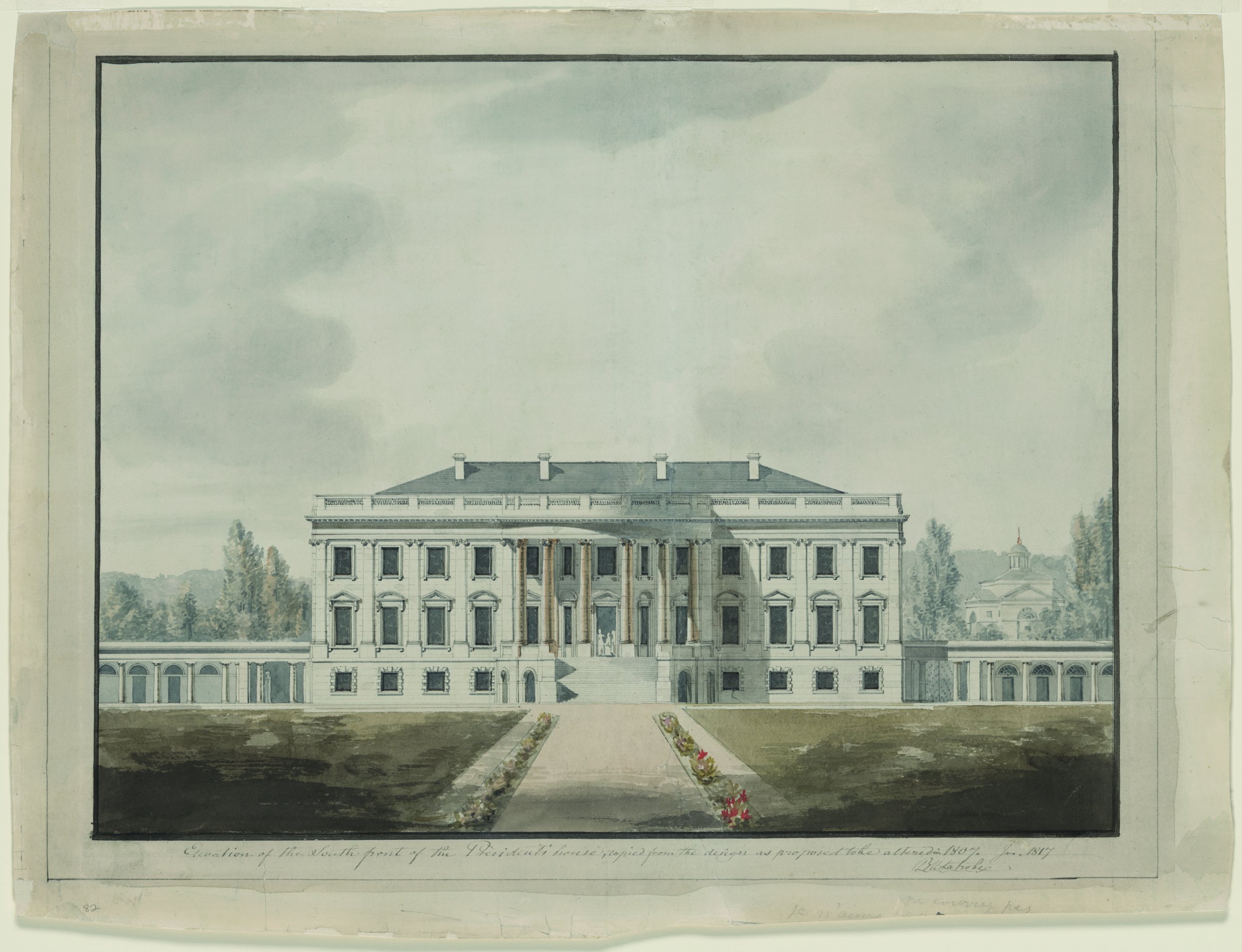
Newsweek explores America's most famous home. This article, by Assistant Editor Alicia Kort, is excerpted from a Newsweek's Special Issue, Celebrating the White House, An Illustrated History of the House that Shaped America.
With Britian relegated to its outposts in Canada and the West, and monarchy finally gone from the 13 colonies, the hero of the revolutionary war, George Washington, was so popular he could have taken the title of king if he had been so inclined. Instead, he established some of the most egalitarian practices possible for an executive to implement. He chose the title president, eschewing monarchy for good, and established an important check to executive power by imposing the two-term limit on himself. He was also instrumental in establishing the city of Washington, D.C. as the center of American government, as well as the executive mansion he would never set foot in himself but cast an incredible shadow over for centuries to come.
Today, the White House is a symbol for our nation's capital and the presidency itself, but in 1796 the idea of what a president's home could be lived only in the minds of President Washington and several specially commissioned architects. Washington would not live to see his grand vision realized, as the project took more than 10 years to complete. He would be the only chief executive to never reside within its walls. But the first commander in chief had a precise vision of what the executive mansion should—and shouldn't—look like. He believed that a house fit for a president should reflect the modest, by-and-for-the-people government he was striving to create.
In fact, Washington was so distrustful of his ability to wield power that he had doubts about becoming president at all. On April 1, 1789, shortly after being unanimously elected, he confided to a friend in a letter, "My movements to the chair of Government will be accompanied by feelings not unlike those of a culprit who is going to the place of his execution: so unwilling am I, in the evening of a life nearly consumed in public cares, to quit a peaceful abode for an Ocean of difficulties, without that competency of political skill, abilities and inclination which is necessary to manage the helm." The president-elect had to leave his beloved home, Mount Vernon, for his presidential duties.
When Washington was sworn in at New York City's Federal Hall in 1789 as the first president of the United States, three cities were vying to be the home of the newly formed democracy. In European seats of power, the cities boomed and grew quickly, making the prospect of capitalhood a mouthwatering one for metropolises all over the country. Philadelphia and New York were both trying to convince George Washington to build an ornate presidential palace in their respective cities, but it was a narrow strip of land on the Virginia/Maryland border that got the nod.

Ultimately Washington, with the help of future president Thomas Jefferson and fellow founding father Alexander Hamilton, made a compromise called the Residency Act. They decided that while the new capital city, tentatively called Federal City, was being built, Washington would stay in Philadelphia. He added a large bay window to his house there, said to have influenced the window that can still be found in the Oval Office today.

All the while, a new house was being built expressly to Washington's orders. According to William Seale, author of The President's Men, "He was the client for the architect, and he built a house like he wanted it to be." Based on his Philadelphia house, Washington included an oval reception room, the Blue Room, to host his weekly "levees." The shape, as well as the large window, would become the basis for the Oval Office. "The oval shape began with Washington," Seale continues. "Over the years it became identified with the White House, and when President Taft enlarged the West Wing, which Theodore Roosevelt had built a few years earlier, he created the Oval Office in 1909. He did so because the shape was already identified with the house."
A House By Any Other Name: The White House wasn't always called as such.
President's Palace
The first architect hired to design the White House, Pierre L'Enfant, called the president's residence the "President's Palace." This could also stem from the way the press used to refer to the first president in newspapers. In 1789, Washington was often called a king because of how much the public admired him, despite the modest opinions he had of himself.
Preisdent's House
This name carried over from Washington and Adams's days at their Philadelphia abode, the executive residence until the White House was finally finished for Adams to move in.
Executive Mansion
This was the residence's official name until Theodore Roosevelt took office and officially made the change from Executive Mansion to a nickname that had stuck: the White House.
White House
Although the president's residence is only known by its nickname now, it wasn't until President Theodore Roosevelt used this name in 1901 by putting "White House" in his engraved stationary that it became official. The phrase "White House" first appeared in a letter from 1811, because the white-painted sandstone made the building stand out among Washington's myriad red-brick structures.
This article was excerpted from Newsweek's Special Edition, Celebrating the White House, An Illustrated History of the House that Shaped America, by Issue Editor, Tim Baker. For more about the White House, pick up a copy today.

Uncommon Knowledge
Newsweek is committed to challenging conventional wisdom and finding connections in the search for common ground.
Newsweek is committed to challenging conventional wisdom and finding connections in the search for common ground.





